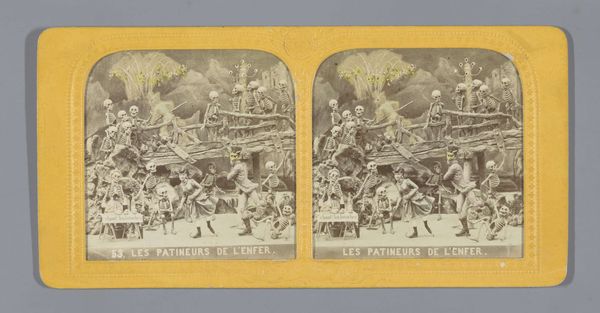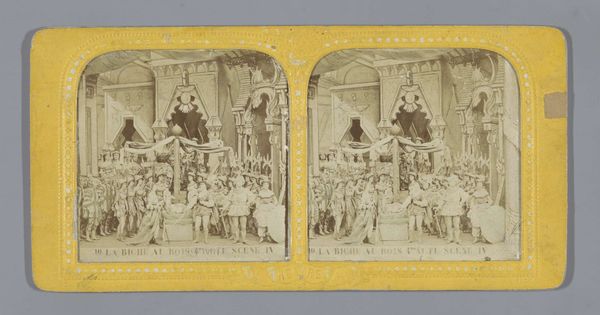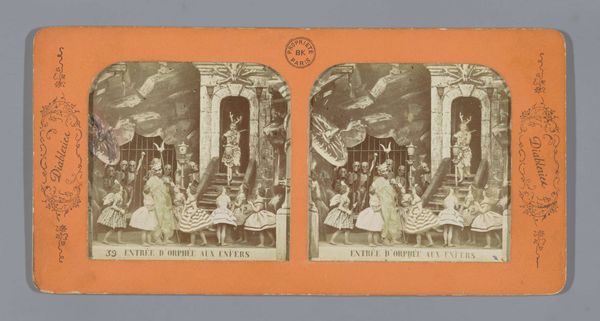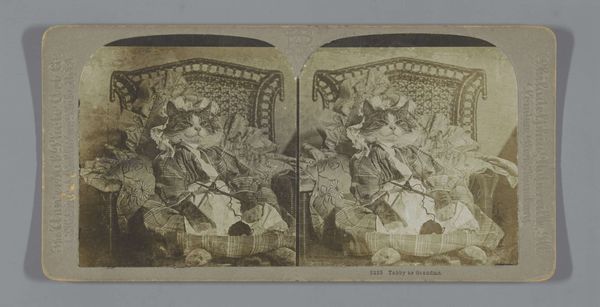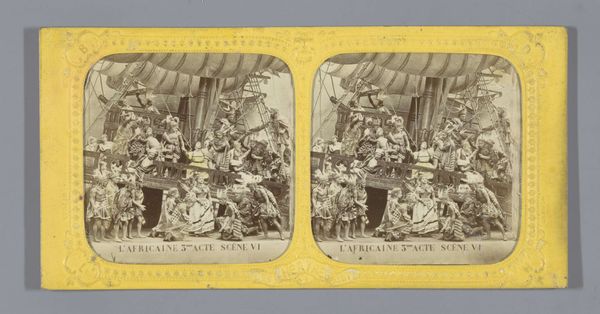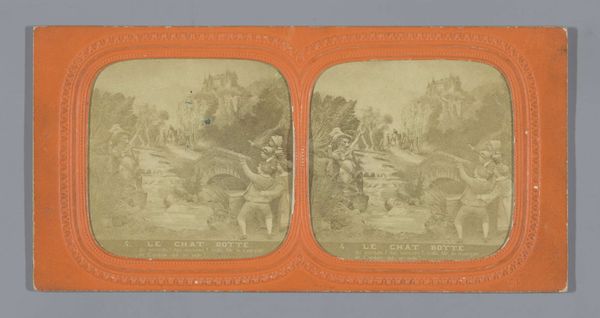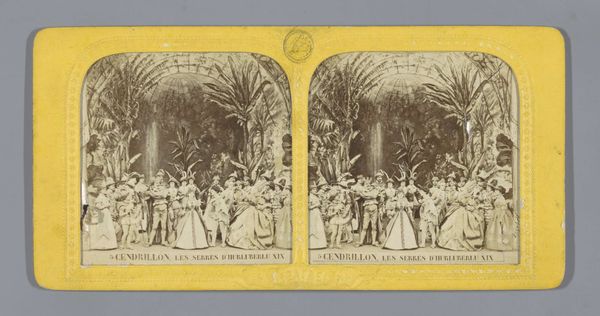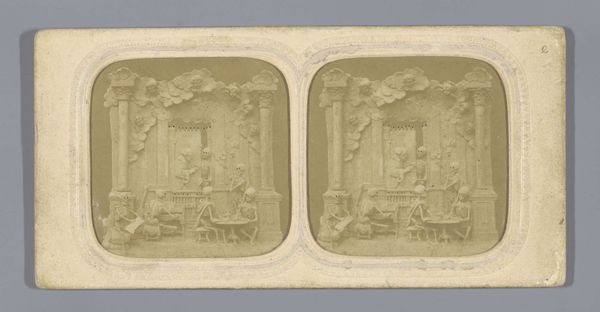
Skeletten keren met 200.000 zielen van oorlog terug in de hel 1868 - 1873
0:00
0:00
print, photography
#
narrative-art
# print
#
war
#
photography
#
momento-mori
#
coloured pencil
#
symbolism
#
history-painting
#
miniature
Dimensions: height 88 mm, width 178 mm
Copyright: Rijks Museum: Open Domain
This anonymous stereograph, likely produced in the late 19th century, presents a macabre scene rendered in sepia tones, evoking both dread and curiosity. The composition is densely packed, dominated by skeletal figures and a cart overflowing with skulls, suggesting a return from war. The photograph is structured around a stark visual contrast: life and death, order and chaos. Skeletons, some draped in tattered garments, are arranged in a procession, their hollow eyes staring blankly. Above, the words "Grande Récolte 200,000 Ames" frame the image, emphasizing the immense scale of loss. Semiotically, the image uses skeletons and symbols of death to challenge the viewer to confront the devastating consequences of war, questioning the values that lead to such destruction. This stereograph serves as a reminder that art is not just about beauty, but also about disrupting our perceptions and prompting us to question the very foundations of our beliefs.
Comments
No comments
Be the first to comment and join the conversation on the ultimate creative platform.


